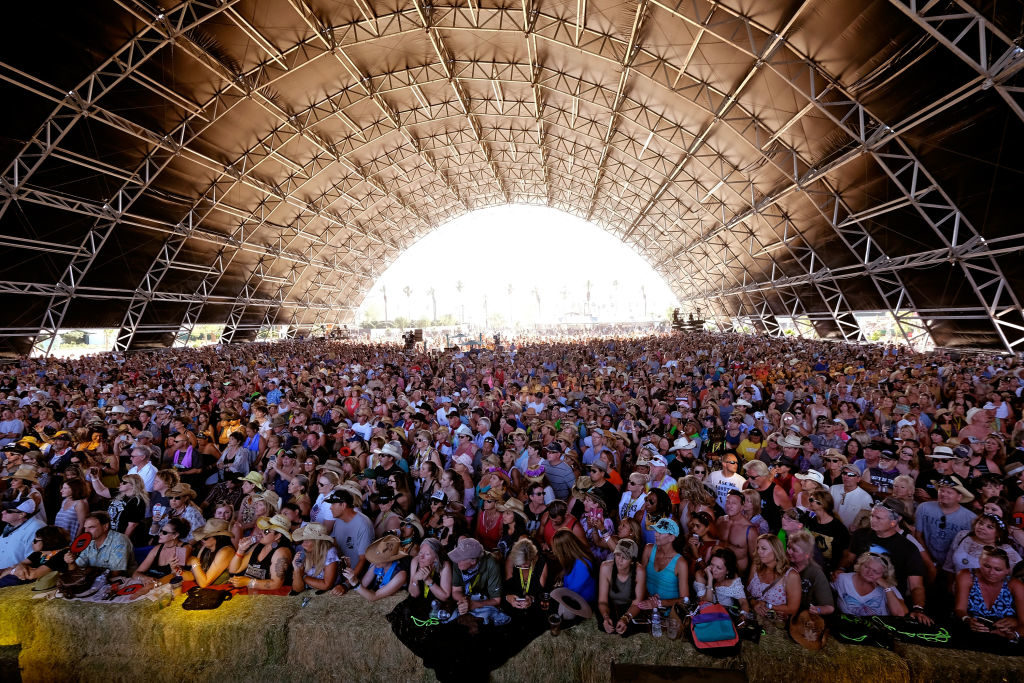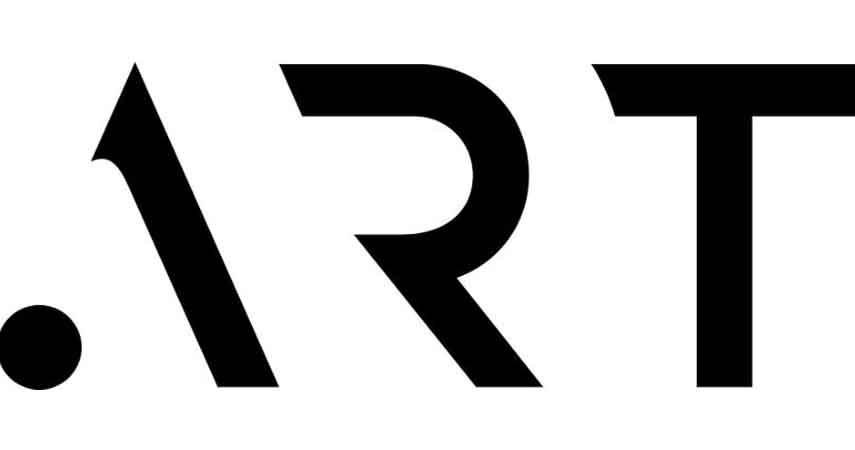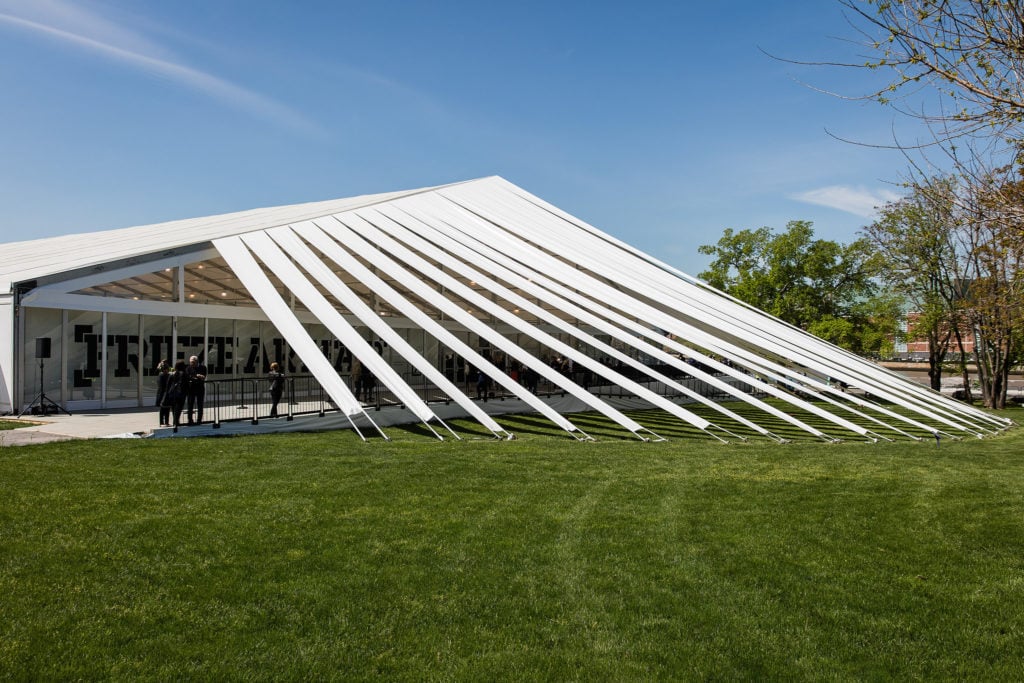Opinion
The Gray Market: Why Art Will Never Be as Popular as Music (and Other Insights)
This week, our columnist examines—and debunks—three dubious solutions to long-running problems in the art industry.

This week, our columnist examines—and debunks—three dubious solutions to long-running problems in the art industry.

Tim Schneider

Every Monday morning, artnet News brings you The Gray Market. The column decodes three important stories from the previous week—and offers unparalleled insight into the inner workings of the art industry in the process.
This week, we’re reviewing three dubious solutions around the industry…
POPULARITY CONTEST: On Wednesday, Margaret Rhodes investigated Artsy’s quest to raise humanity’s visual taste level en route to establishing “a world in which art is as popular as music”—a mission that, to me, raises more questions than a cryptic late-night text from a dead relative’s phone. The main reason? Like the socially awkward teen bookworm I once was, Artsy seems to be utterly confused about the mechanics of popularity in their current environment.
For the sake of argument, let’s set aside the basic reality that people consume so much music partially because it’s a great complement to doing other stuff at the same time. (Try scrolling through JPGs of a museum collection during your drive to work tomorrow, or replacing the stereo at your next party with a painting, and let me know how it works out.) Even then, Artsy still has to crack a vexing—and, I think, insoluble—puzzle to reach its preferred destination.
The issue is that taste and popularity often, if not usually, clash with each other. A few examples are useful here. First, to stick with Artsy’s pop-music comparison, last November saw “Closer,” the cliché-mainlining single from music-snob ridicule-magnets the Chainsmokers, became the longest-running #1 song of 2016, per Billboard—and the twelfth-most enduring chart-topper of all time.
Despite the orthodox opinion that we now live in the “golden age of TV,” total viewer numbers tell us that the biggest hit on the American small screen last year was the retrograde two-camera CBS sitcom The Big Bang Theory. And to drive home the point like an armed Van Helsing over an incapacitated vampire, consider this headline from Quartz about the current cinema landscape: “Netflix’s most popular original films are awful Adam Sandler comedies.”
As I’ve written before, unlike music, movies, TV, video games, or books, art is not a mass medium. It is a cultural niche, largely because its appreciation and market have long been powered by the aggressive cultivation of exclusivity. For many, if not most, artists and enthusiasts, the goal is to engage with works that speak to a small group of like minds fluent in a unique language. For sellers, the goal is to strategically restrict access to already-scarce goods in the hope of spiking their value to maximum height. Although the pharmaceutical industry and a quick browse through your spam folder will try to tell you otherwise, there’s still no aphrodisiac stronger than competition.

Artsy founder Carter Cleveland and Wendi Murdoch at Artsy and SoundCloud Present Collective Reality at the Faena Art Dome on November 30, 2016, in Miami Beach. Photo by Sean Zanni/Patrick McMullan via Getty Images.
In contrast to Artsy CEO Carter Cleveland’s proclamation that taste simply “comes from spending more time with something,” then, an alternate––and I believe, more accurate––definition of “taste” is this: a minority opinion held by a self-selecting (and often self-interested) group that wants to separate itself from the herd, often by consuming what the general public has no interest or no means to consume.
And that concept lays bare the contradiction in Artsy’s business model. The platform wants art to be as popular as music, i.e. to become a mass medium. But despite some recent swerves, mainstream popularity is still not what drives longevity or commercial viability in fine art. Instead, the most successful artists and dealers are the ones who connect with a (frequently platinum-coated) sliver of the global population. I’m not saying I would bet against Artsy in the online space overall. I’m just saying that its grandest ambition has drastically longer odds than its brain trust seems to recognize. [Wired]

The logo for the domain .ART
MASTER OF HIS DOMAIN: On Wednesday, Katya Kazakina covered the rollout of the new domain extension .art, which becomes publicly available to would-be registrants on May 10. Controlled by Azerbaijani investor Ulvi Kasimov thanks to his willingness to plunk down $25 million—which, reminder, is basically pocket lint in the finance or venture-capital realms—.art domains have been available to industry professionals with “preferred access” since mid-February. During that time, they were rewarded with the opportunity to pay a semi-absurd $300 to do one of three things, depending on your interpretation:
1) “Express a personal vision or institutional mission” that “traditional domain extensions” like .com or .net don’t, per Kazakina…
2) Add “meaning to both sides of the dot,” per .Club Domains LLC chief marketing officer Jeff Sass…
3) Box out domain squatters who would try to ransom you for even more, per yours truly.
To be fair, I see nothing wrong with registering a .art domain, especially once the price drops to “as little as $15” when the public marketplace opens, according to Kazakina. But it’s silly to act as if the extension will save or damn anyone with a career in the industry. If a website viewer isn’t sure whether to take you seriously as an artist, gallerist, etc. in the absence of .art, I feel pretty confident saying that they aren’t going to be important to your business anyway.
Even if we WERE to fall for that suspect premise, though, it would still be less preposterous than buying into Kasimov’s larger pitch: that .art sites can be used to establish “digital provenance” for individual artworks. How? By expanding their WHOIS information—the legally required, publicly searchable online record of who owns a given domain—to include fields like “size, year of creation, medium,” and other basic data on a given piece.
Could artists, gallerists, dealers, and auction specialists actually use .art for this purpose? Sure. But they could also transform their bodies into living catalogues raisonnés by tattooing themselves with every relevant bit of information about every artwork they ever produce or possess. Buying up and filling out a hard-drive’s worth of .art domains for authentication purposes would be just as clunky, inefficient, expensive, and painful—basically, every negative that tech-based solutions are supposed to overcome.
So if you want to expand or protect your web presence, go ahead and register a .art site. But if you want to take digital provenance seriously, follow Felix Salmon’s advice and look into a blockchain platform like Monegraph instead. [Bloomberg]

The Frieze New York tent on Randall’s Island. Image courtesy Frieze New York.
SPLITSVILLE: Finally this week, let’s address a more relevant development in the fair sector than another unverifiable Frieze or TEFAF New York sales report. On Wednesday, Paddy Johnson reported on a nascent strategy seeking traction in the emerging and mid-level tiers of the primary market: gallerists charging their exhibited artists for art-fair costs.
Based on Johnson’s sources, the arrangement so far seems to take one of two forms. In the first, the gallerist shifts the commission split in their favor for all sales made at the fair—say, 60% gallery/40% artist instead of the standard 50/50. In the second, the gallerist commandeers 100% of fair proceeds until the resulting revenue covers the artist’s designated portion of fair overhead. LES gallerist Muriel Guepin, the enthusiastic endorser of the latter strategy, justifies the approach by proclaiming, “I am the one taking all the risk and paying [to show at fairs]… But if an artist is not willing to ‘invest’ in his artwork it makes me wonder why I should.”
Now, you’d be hard-pressed to find someone more convinced than I am that mid-market gallerists will have to be flexible and forward-thinking to stay solvent in the years ahead. But in honor of the Kentucky Derby this past Saturday, I can only describe these “solutions” as absolute horse shit. And that label remains apt no matter which side of the industry I evaluate the situation from.
First, in a business where projecting an unwavering image of success is crucial to convincing collectors to spend their money at your gallery rather than your rival’s, it can be lethal for word to leak out that your space is financially insecure enough to start demanding that artists ante up for basic expenses. To actually go on the record to CONFIRM and BROADCAST that you’re doing this is about as self-destructive as bringing your mother with you to a speed-dating event.
Second, from an artist-relations standpoint, this arrangement—and the associated mentality vocalized by Guepin above—demonstrates a toxic lack of understanding and empathy for the human beings making up any gallery’s roster. Though they’re seldom defined this way, every artist is essentially a small business in an increasingly winner-take-all industry.
This means that, short of the Cloud City of established superstars, their lives are an all-encompassing, unceasing gamble. They risk everything every day to pursue a goal with almost cosmically remote odds of financial stability, let alone major success. It borders on the perverse to essentially call them cowards or traitors for resisting the idea of giving up more than half of their sales cut just because fairs are expensive.
As I’ve written before, if we want to start proposing blunt-force solutions to the very real economic challenges of mid-tier gallerists, there’s an alternative that would work just as well for sellers as squeezing more blood out of their artists: Closing their clients better. But strangely, that’s a fix I suspect most struggling gallerists are far less prepared to implement. [Art F City]
That’s all for this week’s edition. ‘Til next time, remember: When you’re intent on being a hammer, everything looks like a nail––even your own reflection.
You can read The Gray Market’s full archive, as well as the latest posts, here.